Line 3: An Unthinkable Pipeline Powered by Our Cash
Updated November 29, 2023 by Neil Simpson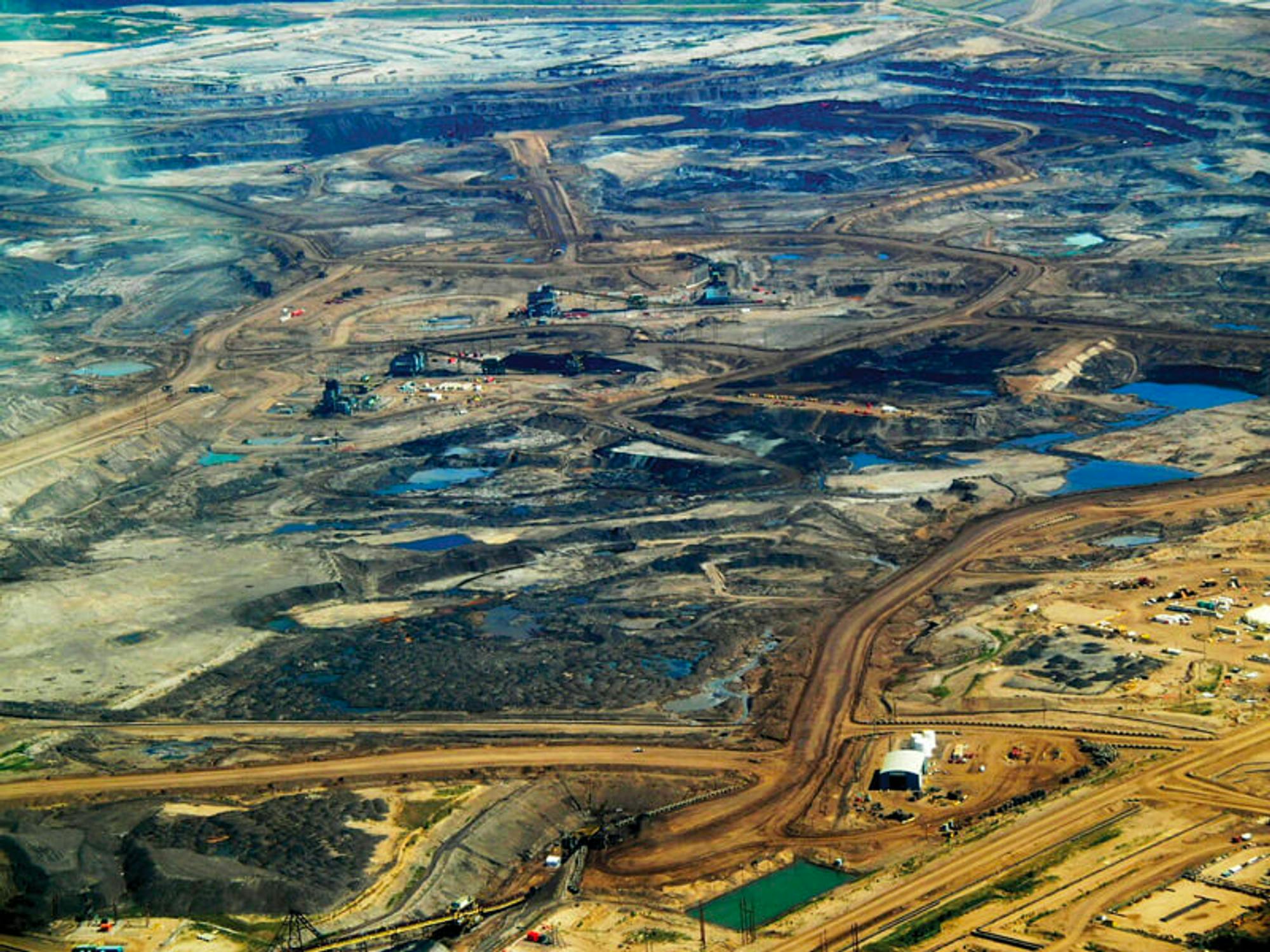
Tar sands in Alberta [source]
So, you just found out that your bank is pouring money into fossil fuels like it’s Champagne on a Formula 1 podium. Maybe you dug deeper with our partner, BankTrack, to read that your bank did something along the lines of "participate as a joint lead manager" for a new coal-fired power station, or "facilitate a bond issuance" for an oil pipeline. Hmmm.
It all sounds formal and dull, doesn’t it? But this could not be further from the truth. That’s why we want to tell you the stories of these projects, starting with North America’s Line 3 pipeline.
The Line 3 "Replacement" Project is the latest battle in the region’s bitter pipeline war. It pits a long list of the world’s biggest banks, an enormous energy company, and tar sands oil extraction, against vulnerable natural environments, defenders of Indigenous lands, and the fight to prevent runaway global heating. President Biden just blocked the notorious Keystone XL pipeline, which has intensified the spotlight on Line 3. If this pipeline fulfills its purpose, the resulting emissions from burning the extracted oil would be unprecedented, fueling dangerous levels of global heating.
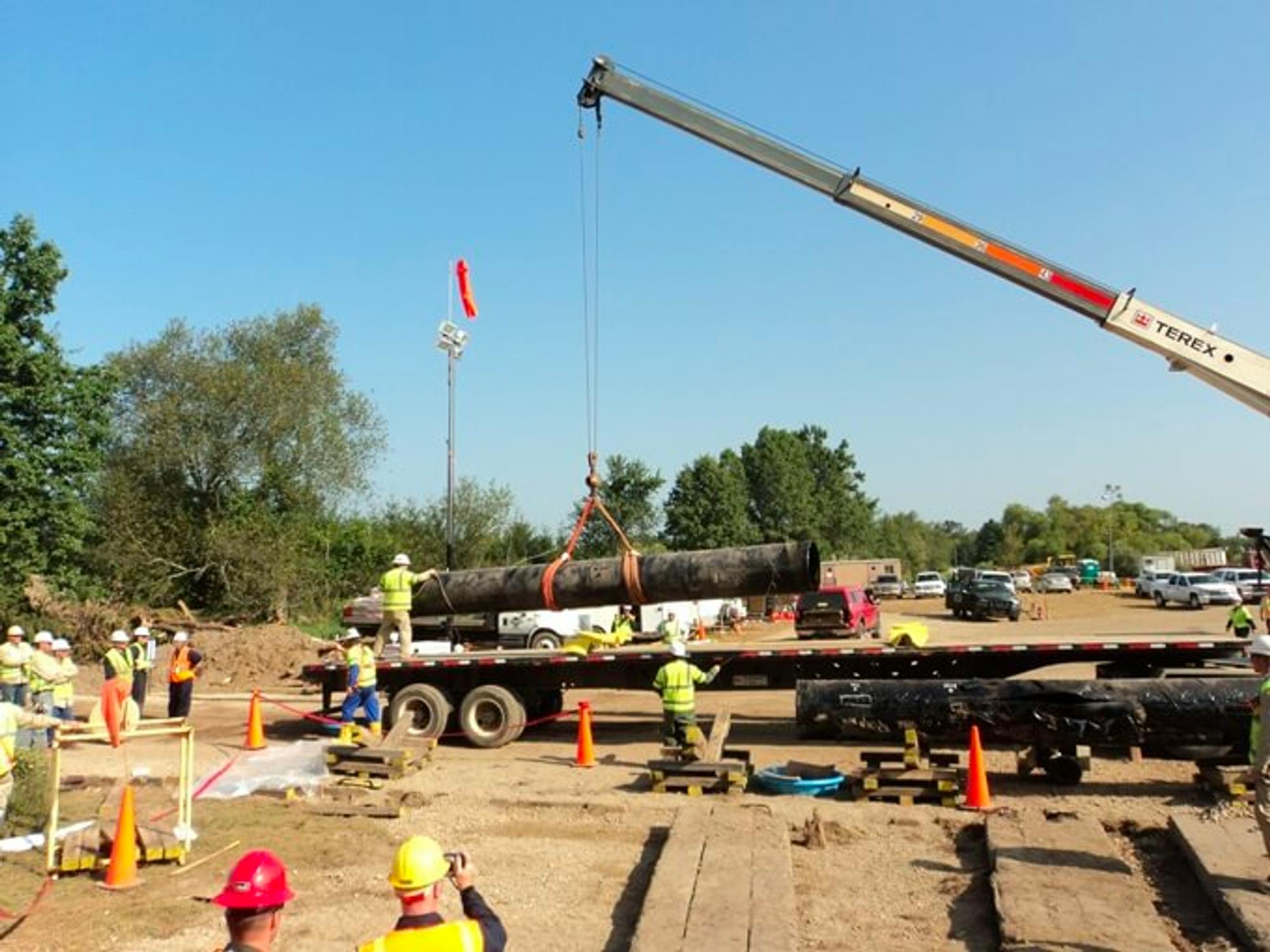
Enbridge oil spill pipeline crew loads section of pipe for examination in Michigan, 2010 [source]
The Enbridge Tar Sands Saga
The goal of the Line 3 pipeline project is to "replace" a pre-existing pipeline. Line 3 is one of six pipelines that pump tar sands oil from Alberta in Canada to Superior in Wisconsin, USA. The Canadian half of the new Line 3 was completed in December 2019, while construction of the final USA section began in December 2020, in Minnesota.
This final section threatens important wildlife habitats, such as wetlands and waterways, and cuts through treaty lands of the Anishinaabe peoples and nations, harming wild rice fields that have nourished generations. An oil leak could wreck all of this.
Tar sands oil is a particularly carbon-intensive oil, found among sand and clay. Extracting tar sands oil is more expensive, more time-consuming, and has a larger negative impact on the local environment than conventional oil extraction via wells.
The volume of greenhouse gases emitted during the burning of tar sands oil is so massive that some banks refuse to do business with it, including BNP Paribas. If the new Line 3 fulfils its purpose, 350 Minnesota calculates that the additional greenhouse gas emissions would be equivalent to that of 50 coal-fired power plants, or another 38 million gas-powered cars on the road.
The six tar sands oil pipelines that run from Alberta to Wisconsin are operated by Enbridge Inc., an energy delivery company based in Calgary, Canada.
Enbridge says that the ageing Line 3 has approximately 900 "structural anomalies," which means things like small holes and cracks. In essence, Line 3 has reached the end of its life and is corroding.
The company refers to this job as the Line 3 Replacement Project, but this name can be seen as misleading. Opponents have argued that "replacement" implies that the project is a) simply a repair job, b) not an expansion of fossil fuel production, and c) not going to disrupt untouched environments. As you will discover below, the opposite is true.
Why Line 3?
We’ve picked the Line 3 project because so many banks are financing it, which means that there’s a good chance your bank is among them. A lot of banks are implicated because Enbridge hasn’t established a project-specific fund for the Line 3 pipeline, instead drawing from its general funds.
Furthermore, the sheer scale of Line 3’s funding is a good example of how the tentacles of one fossil fuel project quickly spread out across the world.
Finally, we’ve decided to shine a light on Line 3 because we are frankly shocked that such an irresponsible project is in operation: climate change denialism is fading and the world is aware of the dangers we face if global heating continues.
So, which banks are financing it?
BankTrack is dedicated to tracking the details of deals made by private-sector commercial banks that power environmental destruction. The Line 3 project is currently one of BankTrack’s "priority campaign targets", so there is a lot of information available on where Line 3’s money has been coming from.
In October 2017, a $1.48 billion USD credit facility led by Wells Fargo was renewed for Line 3. A credit facility is a large pile of money that a debtor can periodically draw upon, which avoids the hassle of repeatedly applying for smaller loans. Although Wells Fargo was the main character in this deal, it was backed up by a vast supporting cast of banks, each joining in to make money off of this project.
Did Your Bank Support This Deal?
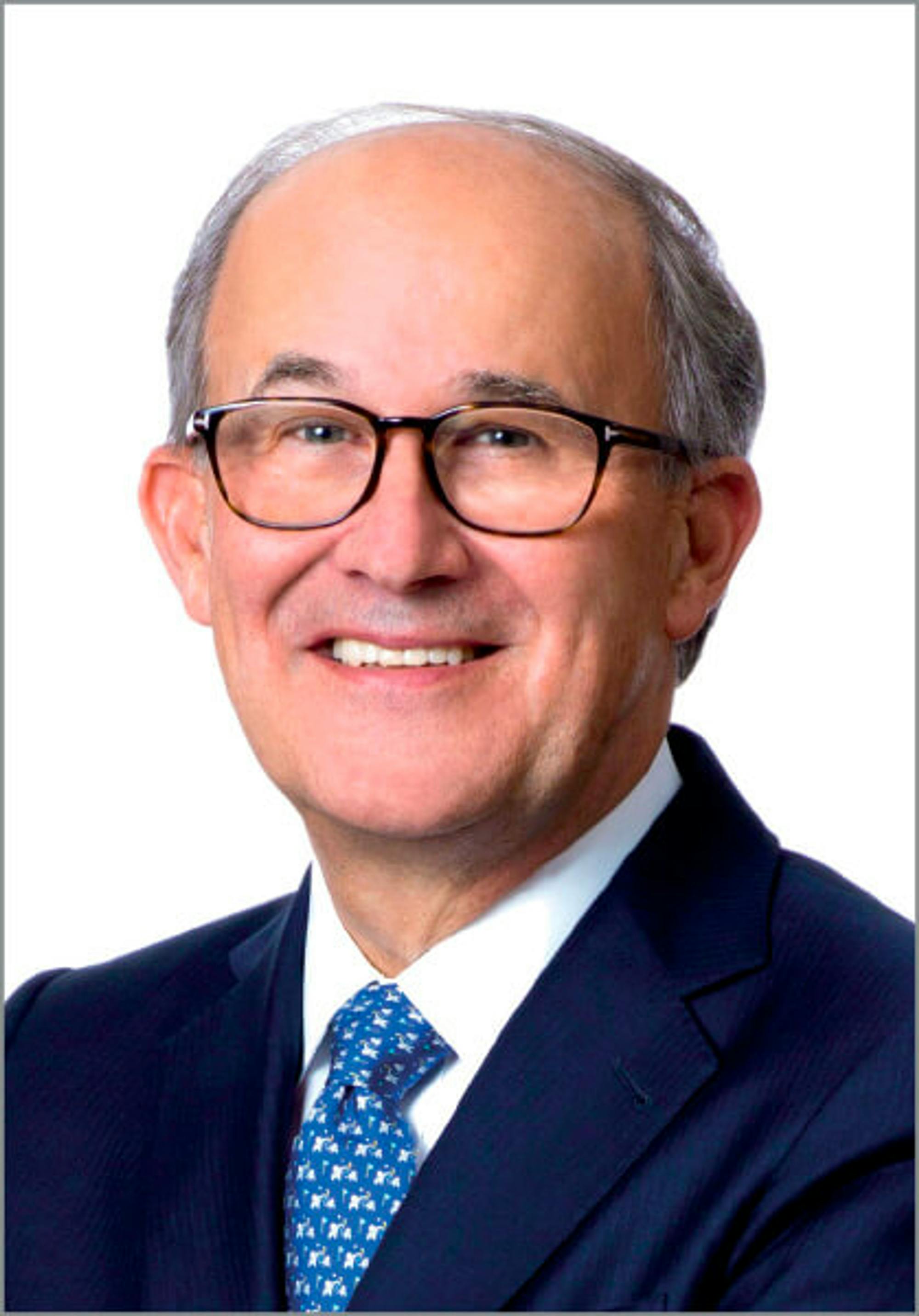
Wells Fargo Chairman of the Board, Charles Noski, May 2019 [source]
A few years later in 2019, two further credit facilities were established, the first worth $641 million USD "with a syndicate of Japanese banks" and the second worth $500 million USD "with an Asian bank". The identities of these banks weren’t made public.
Next came a whopping $2 billion USD bond, in November 2019. This bond was "underwritten" by a group of four banks, which means that they helped by raising $500 million USD each from various sources, then got paid for that help. The four banks were Barclays, Credit Suisse, Deutsche Bank and Sumitomo Mitsui Banking Corporation.
Monumental loans followed in 2020. The first was worth $1 billion USD and led by Mizuho, with a list of other lenders adding to the money pot. The full list wasn’t made public, but we do know that Bank of America, Royal Bank of Canada, Sumitomo Mitsui Banking Corp and Toronto Dominion Bank were all heavily involved.
The other huge 2020 loan was worth $2.975 billion CAD, this time with Toronto Dominion Bank as the main player.
Did Your Bank Support This Deal?
These numbers are mind-blowing. It’s easy to become desensitized to the word ‘billion’, but seeing 2.975 billion written in full should help:
2,975,000,000.
Dollars.
Yikes.
How popular is this project?
If it was entered into a beauty pageant, the Line 3 "replacement" pipeline probably wouldn’t win Miss Congeniality. Here are just four of the issues:
1. What happens to the old Line 3 pipe?
Enbridge says… generally speaking, Enbridge leaves a decommissioned line in place to avoid major construction activities, and to reduce the risk of soil stability issues that could compromise the integrity of operating pipelines sharing the right-of-way.
The campaign group Stop Line 3 says… the pipeline likely has many sites of contaminated soil and water around it already, from old leaks and spills, and the worsening "structural anomaly" problem. Pipeline abandonment also has an enormous hydrological impact. And as it corrodes, the pipe will slowly allow water to enter, and eventually transform into a water conduit that could easily drain a wetland or small lake, or flood a farm field.
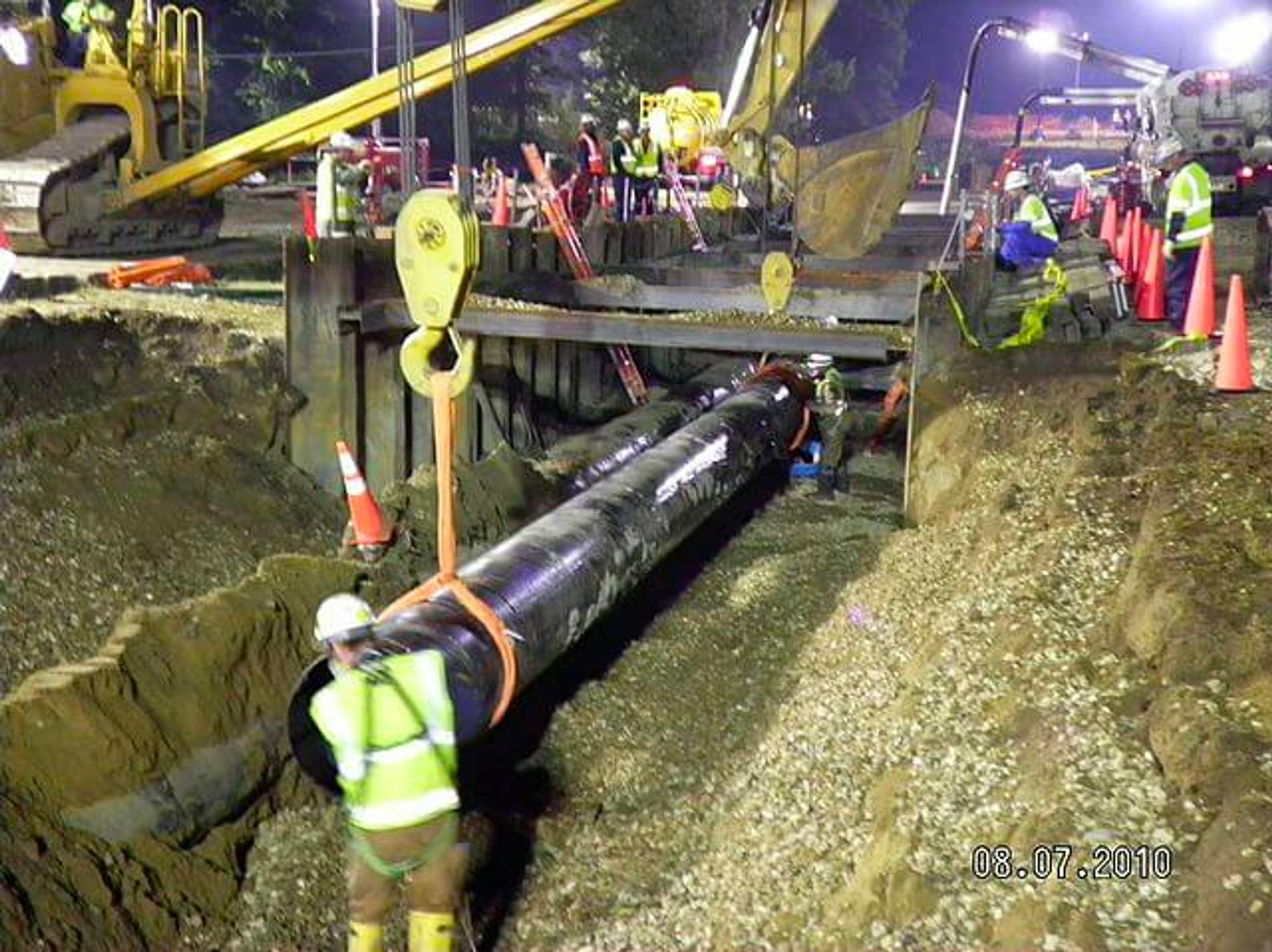
Repair work at the Enbridge pipeline oil spill site near Marshall, Michigan, August 2010 [source]
2. What about the land rights of Minnesota’s Indigenous Chippewa?
Enbridge says… at Enbridge, we are committed to early engagement and meaningful dialog with Indigenous peoples along our pipeline rights-of-way, based on mutual respect and trust.
The Supreme Court of the United States says… we conclude that the Chippewa retain the usufructuary rights guaranteed to them under the 1837 Treaty.
Explainer: In 1837, the US entered into a treaty with several Bands of Chippewa Indians, which meant the Indians ceded land in present-day Wisconsin and Minnesota. In return, the government guaranteed that the Indians would continue to have certain hunting, fishing, and gathering rights on the ceded land. This treaty was upheld by the Supreme Court during a 1999 legal battle. Were Line 3 to leak, it would threaten the future of hunting, fishing, and gathering on these lands, thereby violating this treaty. It’s therefore difficult to believe that Enbridge is acting with ‘respect and trust’, especially considering that the company spilled 800,000 gallons of oil into Talmadge Creek and the Kalamazoo River near Marshall, Michigan in 2010 (pictured above).
3. Is this an expansion?
Enbridge says… in the U.S., the replacement pipeline will follow Enbridge's existing Line 3 route from Joliette, North Dakota to Clearbrook, Minnesota, and then will primarily follow existing pipeline and transmission routes from Clearbrook to Superior, Wisconsin.
BankTrack says… The replacement Line 3 would take a brand new route. This path cuts through pristine wetlands and watersheds in northern Minnesota, passing through the headwaters of the Mississippi River to the shores of Lake Superior, through the heart of Minnesota’s lake country and some of the largest and most productive wild rice beds in the world.
4. What about climate change?
Enbridge spokesperson Juli Kellner says… It is our responsibility to do what we can to address climate change. That is why we’ve set a target of net-zero emissions by 2050 and laid a credible path to achieving it, including tying compensation of our executives to our performance in this area.
Reclaim Finance says... Enbridge’s greenhouse gas reduction and net-zero targets do not apply to what represents the lion’s share of its emissions: the use of the products it sells to utility companies and the electricity grid transmission and distribution losses. Enbridge itself writes that its reduction targets apply to less than 2% of the lifecycle emission intensity of oil sands.
Former NASA climate scientist James Hansen says… Canada’s tar sands, deposits of sand saturated with bitumen, contain twice the amount of carbon dioxide emitted by global oil use in our [humanity’s] entire history.
End Game
Project-specific arguments aside, humanity cannot afford to continue extracting and burning fossil fuels. The more greenhouse gases that are in the atmosphere, the hotter our planet becomes.
We can’t put it better than Minnesota’s Jami Gaither, who lives in the pathway of the new Line 3 pipeline and recently said this to The Guardian:
How much longer can we keep up this charade, this idea that we can keep going on developing fossil fuels? We’re building a fucking tar sands pipeline at the end of the world.
Like many of us, Jami Gaither understands that this is the fight for our lives. If global heating is not stopped and reversed, we face food insecurity and higher levels of starvation, the obliteration of small island states, huge public unrest and migration, and increasingly extreme weather events.
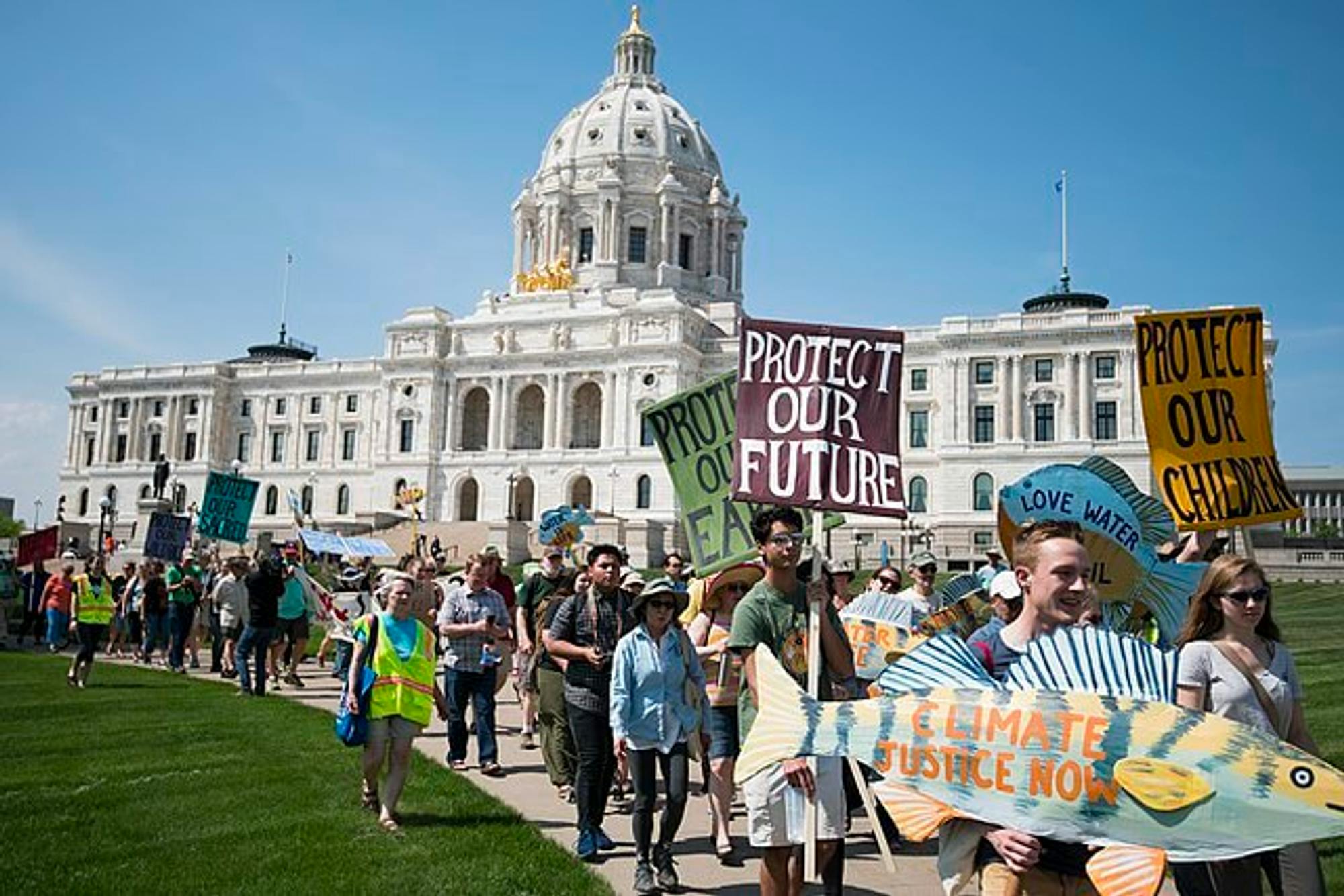
The Block (Line 3) Party protest at the Minnesota capitol in St. Paul, May 2018 [source]
Find your own power
If you wish to familiarize yourself with recent efforts to halt North America’s fossil fuel pipelines, we recommend an April 2021 episode of the How to Save a Planet podcast, called The Fight to Stop Oil Pipelines: "For Water. For Treaties. For Climate".
The episode includes an interview with Tara Houska, a Couchiching First Nation American and attorney, who has been on the front line of these efforts for many years. Tara’s testimony and advocacy is compelling, not to mention inspirational.
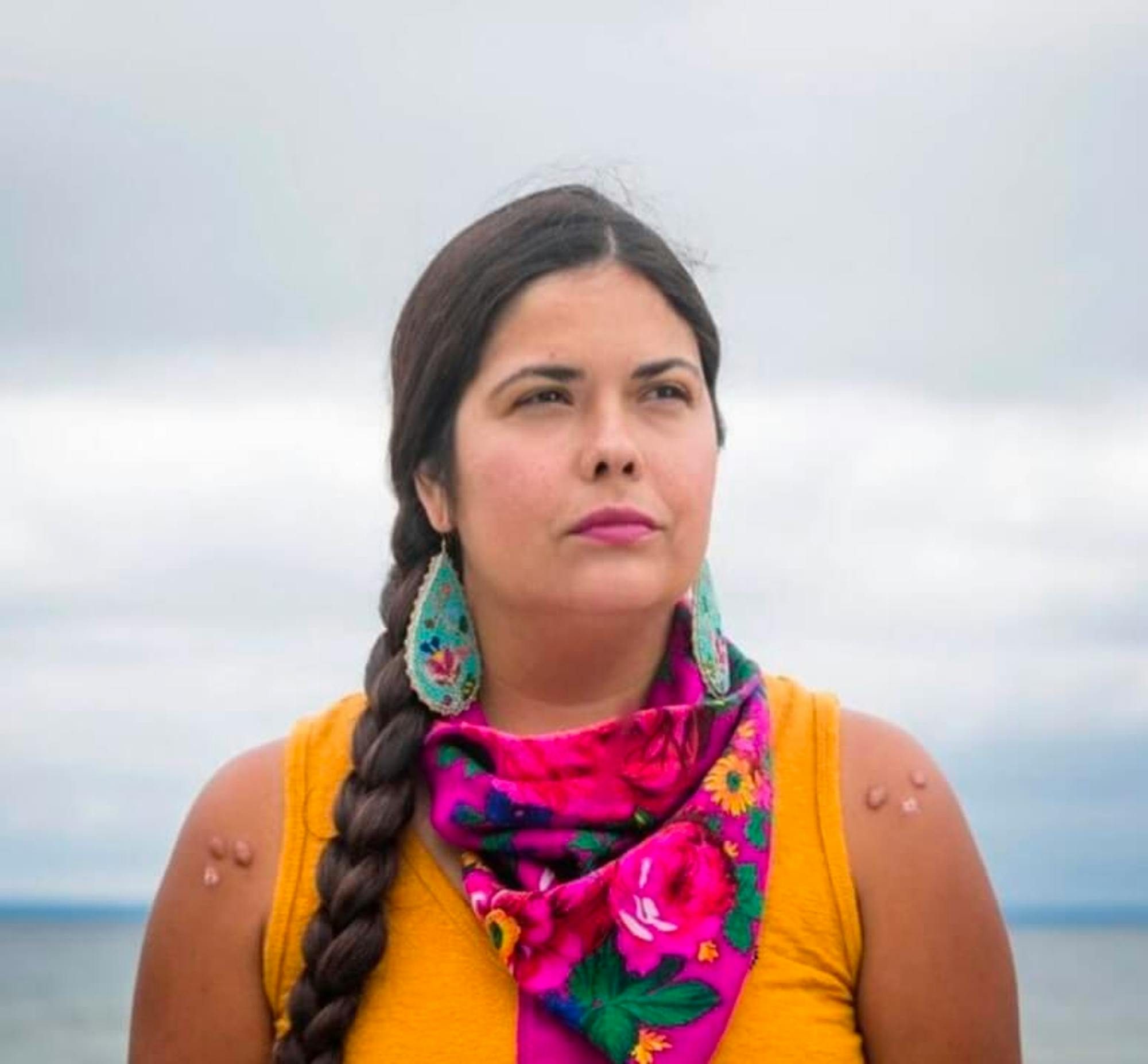
Tara Houska [source]
Houska is a member of the steering committee for the Stop the Money Pipeline coalition, which launched its Defund Line 3 campaign in February 2021. The campaign has been responsible for a steady wave of actions against the banks financing Line 3, such as the protest pictured below, at Wells Fargo HQ in San Francisco. Stop the Money Pipeline’s next move is a Day of Action on Friday 7 May.
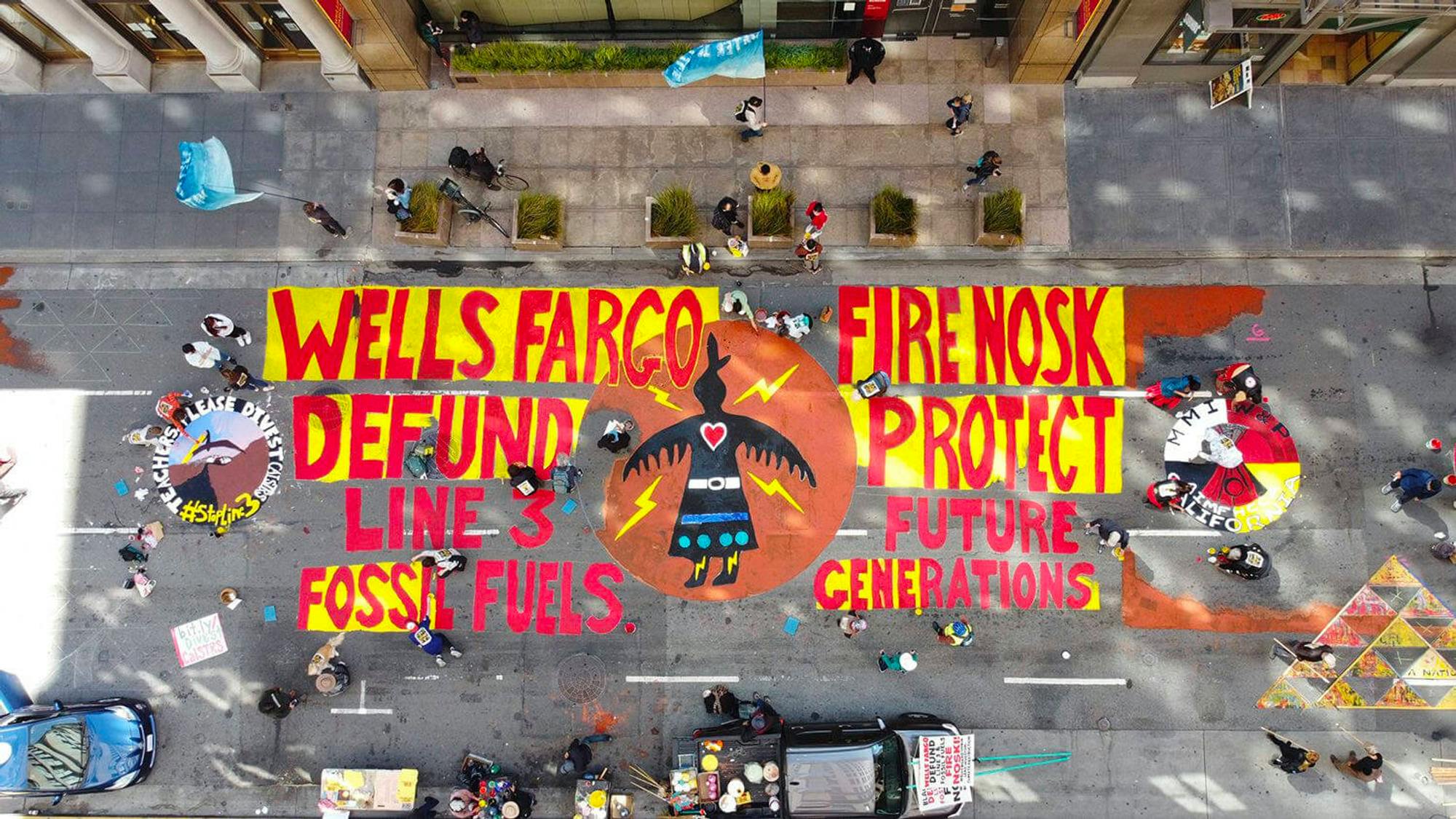
Protestors send a message to Wells Fargo at its San Francisco HQ (Photo: Arthur Koch)
Houska, who five years ago played a key role in the momentous Standing Rock protests against the Dakota Access Pipeline and currently lives at a Line 3 resistance camp, shared this message during her How to Save a Planet interview:
"Colonisation and genocide nearly wiped all of us [First Nation Americans] off the face of the earth but we’re still here and so, the bravest thing that I think people can do is actually stand with us. That’s using privilege, access, your own agency, finding your own power, and being empowered."
In the face of enormous corporate interest and armies of banks lining up to provide finance, we believe that mass people power is essential in putting an end to fossil fuel projects like Line 3. None of them could be built without our money.
As Houska says, it’s time to make a stand. Bank.Green exists to make a stand against the banking industry, which continues to finance environmental catastrophe. Find out if your bank is supporting fossil fuel infrastructure here and take action with our growing movement here.
It is now up to us to say that projects such as Enbridge’s Line 3 pipeline are no longer acceptable, because the world’s biggest banks cannot be trusted to say it themselves.
Start to Bank Green Today
Banks live and die on their reputations. Mass movements of money to fossil-free competitors puts those reputations at grave risk. By moving your money to a sustainable financial institution, you will:
Send a message to your bank that it must defund fossil fuels
Join a fast-growing movement of consumers standing up for their future
Take a critical climate action with profound effects